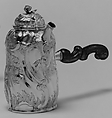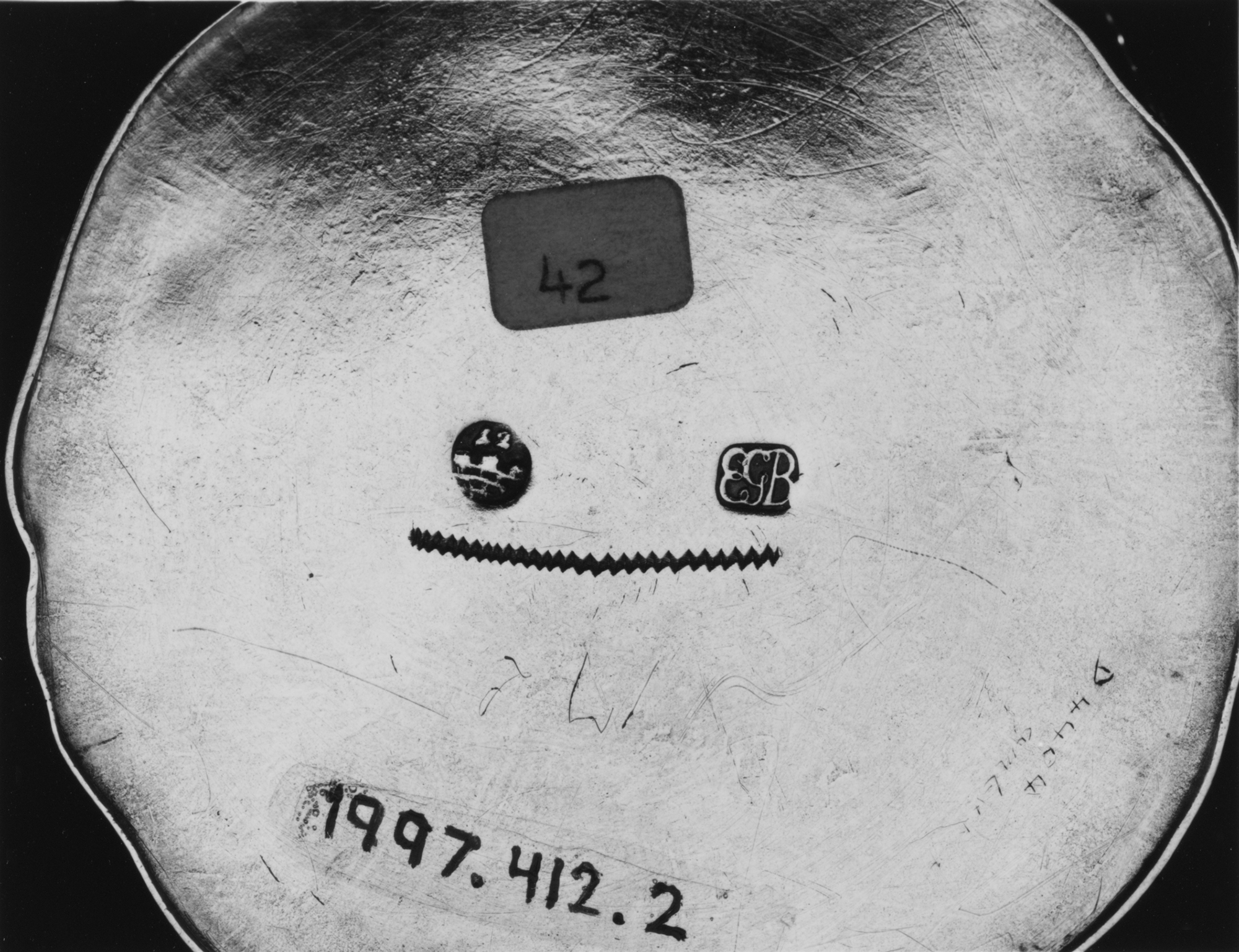Hot milk pot
This coffeepot and its mate (1997.412.1) bear the maker's mark EGB, which recent research identifies as belonging to the goldsmith Ernst Gottlob Borns of Bautzen, a city east of Dresden in Saxony. For both pots Borns took the standard eighteenth-century waisted-barrel body form and enlivened it with a playful variety of surface modeling that emphasizes both the malleability and light-reflective qualities of the silver. The superb technique and the flamboyance of the design make these pieces exemplary documents of the distinctive Saxon interpretation of German Rococo. Remarkable details are the rocailles of flamelike appearance surrounding the base, thus teasingly evoking the flames of a burner, and the carved wooden handles echoing the embossed elongated C-scrolls of the silver bodies. Also characteristic is the tension between polished plain surface areas and articulating rocaille and floral relief elements. This style was developed and dominated by Dresden court craftsmen under the patronage of Friedrich August II, elector of Saxony and king of Poland (1696–1763), and his influential prime minister, Count Brühl. Related forms were also employed in products of the nearby Meissen porcelain factory.
Due to rights restrictions, this image cannot be enlarged, viewed at full screen, or downloaded.
This artwork is meant to be viewed from right to left. Scroll left to view more.



